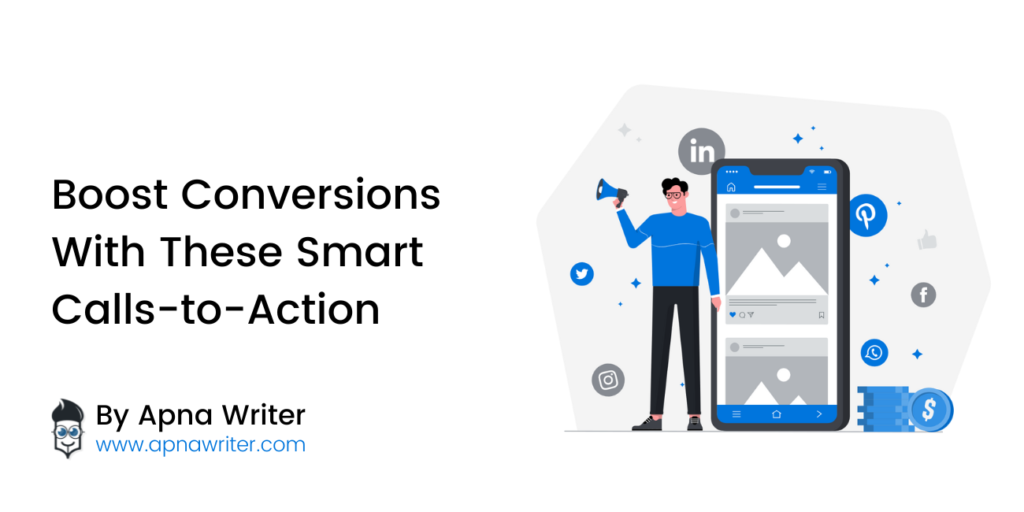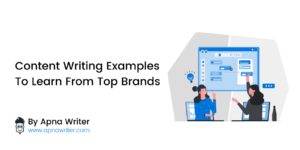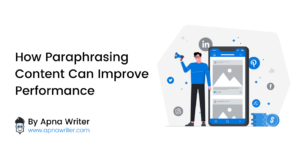A call-to-action (CTA) is a clickable element, such as a button or code, that prompts the reader or viewer to take an action. It is used in digital marketing to boost the conversion rates of ads, landing pages, and campaigns.
Crafting a CTA is a skillful art. A great CTA can make or break the conversion. It is the biggest bottleneck in most marketing campaigns.
According to studies, poorly placed or ill-fitting CTAs decrease the number of conversions. So, learning how to create and place CTAs is crucial for the success of marketing.
Let’s learn about what makes a CTA successful and what can make it a failure. Then we will look at some examples of good CTAs to solidify your understanding of good CTAs.
Table of Contents
ToggleWhat Makes a Good Call-To-Action
So what makes a CTA good? Well, many things need to be accounted for to make a CTA good. Some of them are things you can do with every CTA; others are context sensitive and need to be adjusted on a case-by-case basis.
Let’s check them out.
-
- Power Words. These are specific words that you can add to your CTAs to make them more engaging and persuasive. Depending on your niche and service/product, these words can change. For example, words that work in an e-commerce store are going to be different than those used in a B2B service.
- Clarity. A CTA should be clear before being clever. You don’t want to confuse users with unfamiliar terms and complex vocabulary. The clearer your messaging is, the higher your CTA’s conversion rates will be.
- Placement. A good CTA doesn’t just have precise and powerful wording; it also appears in the right place. If you wrote an article that highlighted how to use a particular service and wanted to plug your service into it, where would you put the CTA? Near the end? In the middle of the article, when you discuss the service? At the start? A pop-up at the exact part of the article where the service is being discussed would be best.
- Personalization. A CTA that is personalized according to your audience brings in far more conversions than a generic CTA. That is just plain psychology. People like things that are tailored to their taste. You can personalize CTAs according to demographics, niche, industry, and other trackable markers.
- Provide Your Solution in The CTA. A plain CTA doesn’t have the power to convert compared to a CTA that also provides the solution. For example, instead of saying “Sign Up Now”, say “Sign-up Now to Get the Free E-Book” or something to that effect.
So, those are five things that your CTAs should have. This will improve their performance and bring in more conversions.
What Should You Avoid in a CTA?
As good as CTAs are, they can backfire if you create them without care. Bad CTAs lead to situations where your leads go cold and conversion rates drop dramatically.
So, here are some things that you should avoid doing to boost your CTA performance.
- Don’t Use AI-Generated CTAs. AI is quite powerful at creating text content; however, when you are working with something as sensitive as a CTA, it falls short. There are tons of examples of AI-generated CTAs that look weird, out of place, and most of all, unengaging. Try it for yourself, and you will notice the myriad flaws easily.
So, whatever you do, don’t rely on AI completely. Put more thought and effort into your CTAs.
- Vague or complicated CTAs. Vague CTAs are the worst. They provide no information to the user and are ineffective at prompting them to take action. For example, a CTA that simply says “Click Here” provides no information to the user about what will happen once they click. “Click Here to Get Free Sample” is a clear and simple CTA, making it more effective.
- Audience Mismatch. The language you use in your CTA should match the tone and style that your audience expects. For example, the same CTA that works on young people won’t perform as well with older people. So, if you are a company whose audience includes multiple demographics, then you must always create multiple CTAs that cater to each.
- Weak and Passive Language. CTAs are supposed to make the reader feel compelled to take action. That’s why power words are necessary. Weak phrases like “Consider” or “Try” lack the drive to motivate the audience to follow through.
- Creating Fake Urgency. Grammarly is notorious for this one. It consistently offers “Limited Time” discounts on its services. So, first off, that’s not limited time if you can get it multiple times a year. Also, you can expect a user to believe that your digital resource is somehow going to vanish if they don’t pay for it now. So, just avoid the fake FOMO (fear of missing out).
- Deceptive Promises. CTAs that promise unrealistic benefits or rewards are also not well-received. They can improve conversions for a short amount of time, but in the long run, they just damage your company’s reputation and lead to losses. So always avoid doing that.
Examples of Great CTAs
Now, let’s take a look at some examples of excellent CTAs and study how they embody the features that make them so great.
QR Code CTAs
A QR code paired with a text CTA is fantastic at bringing in conversions. They are an interactive item, making the experience more engaging, and they can also be used for tracking ad performance.
According to Bitly, the following are some great examples of CTAs that, when paired with QR codes, will boost conversions.
- “Scan for an exclusive in-store discount.”
- “Unlock your secret coupon here. “
- “See it in action: Scan for product demos.”
As you can see, all of the CTAs include action words, are straight to the point, extremely precise, and don’t make any false promises. You can easily make good use of such CTAs by using a QR code generator to create codes that lead to discount coupons or videos of product demos.
Pop Up CTAs
Pop-up CTAs, when properly used, can be very useful. Be careful, though, when overused, they can be super annoying and act as a deterrent instead.
A pop-up CTA placed in an article or a video about a product or a service can be very powerful. If they appear just as the segment about your tool or product is finished, customers are far more likely to click on that CTA. Examples include the scroll-triggered pop-ups, click-event pop-ups, and exit-intent pop-ups.
The common thread among all of these is that they only appear once the visitor has shown their interest in your product.
Floating Bar CTAs
These are types of CTAs that just stay visible on the edge of the user’s screen. They allow a user to click on it at their convenience. This relieves them of the pressure to act instantly, allowing them to do it when they feel like it.
This is a great option to use when you know that your audience is highly research-oriented and wants to learn everything before making a decision.
Standard Text CTAs
Standard text CTAs that are paired with a button are the most common type of CTA. But as we mentioned before, as long as the text uses action words, the right tone, and is specific and short, it will bring in conversions with ease.
Conclusion
So, there you have it, the breakdown of what makes a CTA good or bad, as well as some examples of how to use them. If you can incorporate these lessons into your marketing, you will find that your sales funnel starts bringing in more conversions instead of leads that turn cold halfway.





